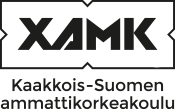Economics (5 cr)
Code: IB00CP16-3004
General information
Enrollment
16.12.2019 - 10.01.2020
Timing
06.01.2020 - 26.04.2020
Number of ECTS credits allocated
5 op
Virtual portion
2 op
RDI portion
2 op
Mode of delivery
60 % Contact teaching, 40 % Distance learning
Campus
Kouvola Campus
Teaching languages
- English
Degree programmes
- Degree Programme in Digital International Business
Teachers
- Jagat Kunwar
Teacher in charge
Jagat Kunwar
Groups
-
IBKV19SP1Digital international business, International marketing
-
IBKV19SP2Digital international business, Global supply chain management
Objective
You demonstrate the understanding of different parts of micro- and macroeconomics.
You are able to explain the role of economics in a company’s business operations.
You are able to explain the influences of economic policy on different sectors of society.
Content
What does an economy consist of?
What is the theory of enterprise from the economics viewpoint?
How do economic policies affect the various sectors of society?
Materials
The lecture notes in the course page summarize key information from various sources. Regular attendance in classes and completing assigned tasks must be enough to achieve the learning objectives. However, economics is a very mature discipline and there are wide varieties of textbooks available in many sources. If you want to go deeper into certain issues, the recommended sources are:
• Mankiw, N. G. (2015). Principles of Economics. Boston, MA: Cengage Learning.
• Parkin, M., Powell, M., & Matthews, K. (2017). Economics. New York : Pearson.
Teaching methods
At the end of the study unit, each participant is expected to be able to:
• Explain the key ideas defining the economic way of thinking
• Describe the methods of allocating scarce resources
• Explain determination of price and output in various market structures
• Explain what a firm is and describe the economic problems faced by firms
• Identify macroeconomic policy challenges and describe the fiscal and monetary tools available
Exam schedules
The maximum number of points for the course is 100, broken down as follows:
• Mid-term quiz done individually and implemented in the course page (25%)
• Final quiz done individually and implemented in the course page (25%)
• Five tasks done in groups (50%)
• Attendance, bonus (10%)
Further information
Course page:
https://learn.xamk.fi/course/view.php?id=1898
Evaluation scale
1-5
